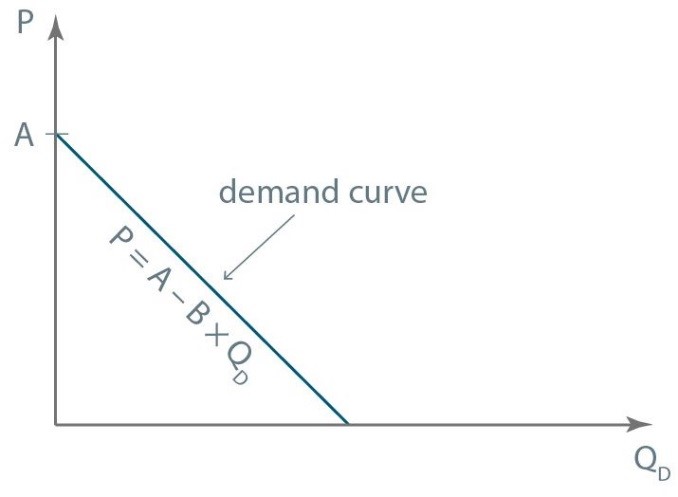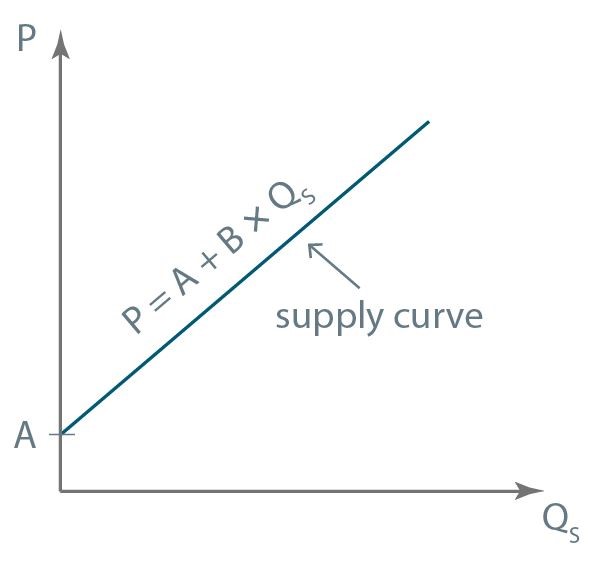Level 1 CFA® Exam:
Demand and Supply - Introduction
Demand determines the quantity of goods and services consumers are able and willing to purchase in a given time and at a given price.
The quantity of demand depends on many factors among which the price of the offered good is one of the most important.
The law of demand states that:
- if the price of a given good rises, consumers are willing to buy less,
- if the price of a given good drops, consumers are willing to buy more.
However, there are 2 exceptions to this law. These are Giffen goods and Veblen goods. But we will say a bit about them in another lesson.
The demand function determines the quantity demanded. The quantity of a good that consumers are willing to buy is a function of the own-price of a good, consumers’ income, and the price of another good (complement or substitute). Also, note that other factors may also influence the quantity demanded.
The function where the price of a good is an independent variable, while the quantity of demand is a dependent variable is an inverse demand function and it is expressed this way:
\(P=A-B\times{Q_D}\)
Where:
- \(P\) – price of the good,
- \(Q_D\) – quantity demanded of the good,
- \(A,B\) – constants.
The graph of the inverse demand function is called the demand curve and it has a negative slope. This reflects the law of demand.

Note: This demand function is called inverse because the price is on the Y-axis and the quantity demanded on the X-axis. Usually, in mathematics, the independent variable (in this case price) is given on the X-axis and the dependent variable (in this case quantity demanded) is given on the Y-axis. This is how economists present the demand function.
Supply determines the quantity of goods and services sellers are willing to offer at a given time and price.
Similarly, as in the case of the quantity of demand, the quantity of supply depends on many factors which include the price, the production costs, the employed technology, etc.
The supply function determines the quantity of a good that sellers are willing to offer. Here, the quantity is a function of the own-price of a good and the wage rate of labor. Remember, there can be other factors that influence the quantity supplied.
The function in which the price of a good is an independent variable, while the quantity of supply is a dependent variable, is an inverse supply function. It is expressed in the following way:
\(P=A+B\times{Q_S}\)
Where:
- \(P\) – price of the good,
- \(Q_S\) – quantity supplied of the good,
- \(A,B\) – constants.
The graph of the inverse supply function is called the supply curve and it is positively sloped. What the graph shows is that when the price increases, a greater quantity is supplied. And if the price decreases then a lower quantity is supplied. This is called the law of supply.

Note: This supply function is called inverse because the price is on the Y-axis and the quantity supplied on the X-axis. Usually, in mathematics, the independent variable (in this case price) is given on the X-axis and the dependent variable (in this case quantity supplied) is given on the Y-axis. This is how economists present the supply function.
Change in Demand (Supply) vs Change in Quantity Demanded (Supplied)
star content check off when doneBoth the inverse demand function and the inverse supply function assume that all independent variables apart from the price of a good hold constant which is traditionally referred to by the Latin phrase ceteris paribus.
(...)
- Demand is how much consumers are willing to purchase. Supply is how much sellers are willing to offer.
- The law of demand states that if the price of a given good rises, consumers are willing to buy less, and vice versa.
- The demand function is called inverse because the price (the independent variable) is on the Y-axis and the quantity demanded (the dependent variable) on the X-axis.
- The supply function is called inverse because the price (the independent variable) is on the Y-axis and the quantity supplied (the dependent variable) on the X-axis.
- When a variable other than the price changes, there is a change in demand or supply, which means that the supply curve and demand curve may move either right or left.
- A change in the own-price of the good is reflected by the change in quantity demanded or supplied – it is a movement along the demand or supply curve.


